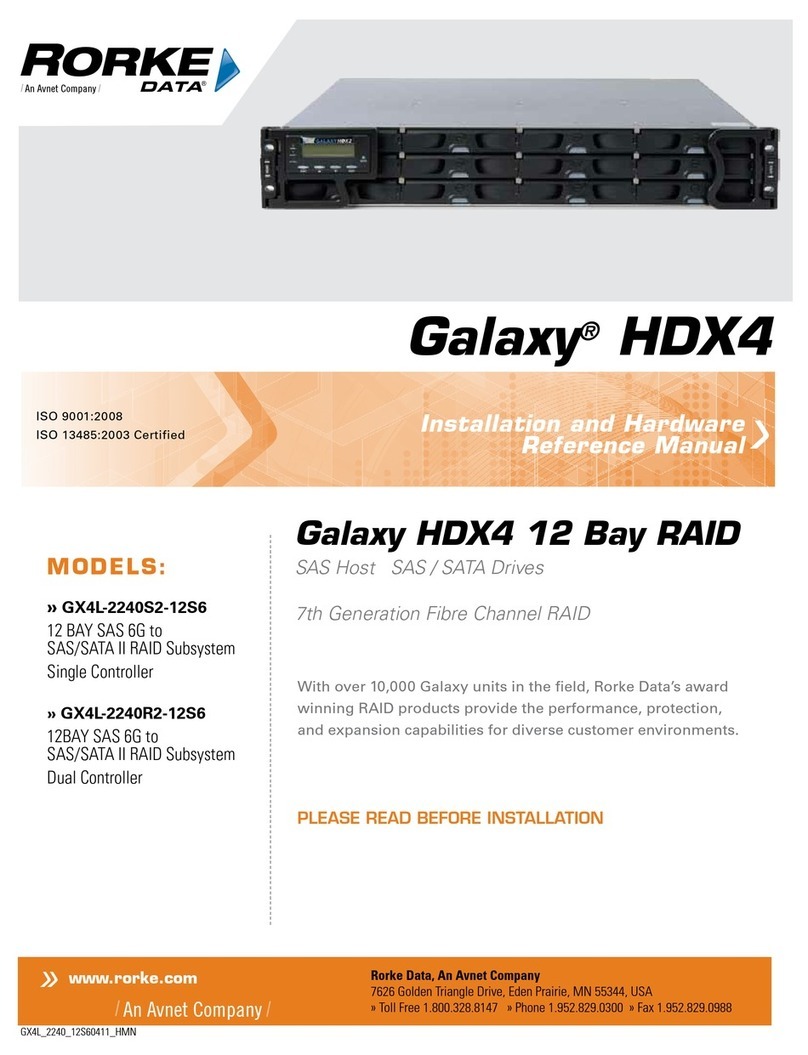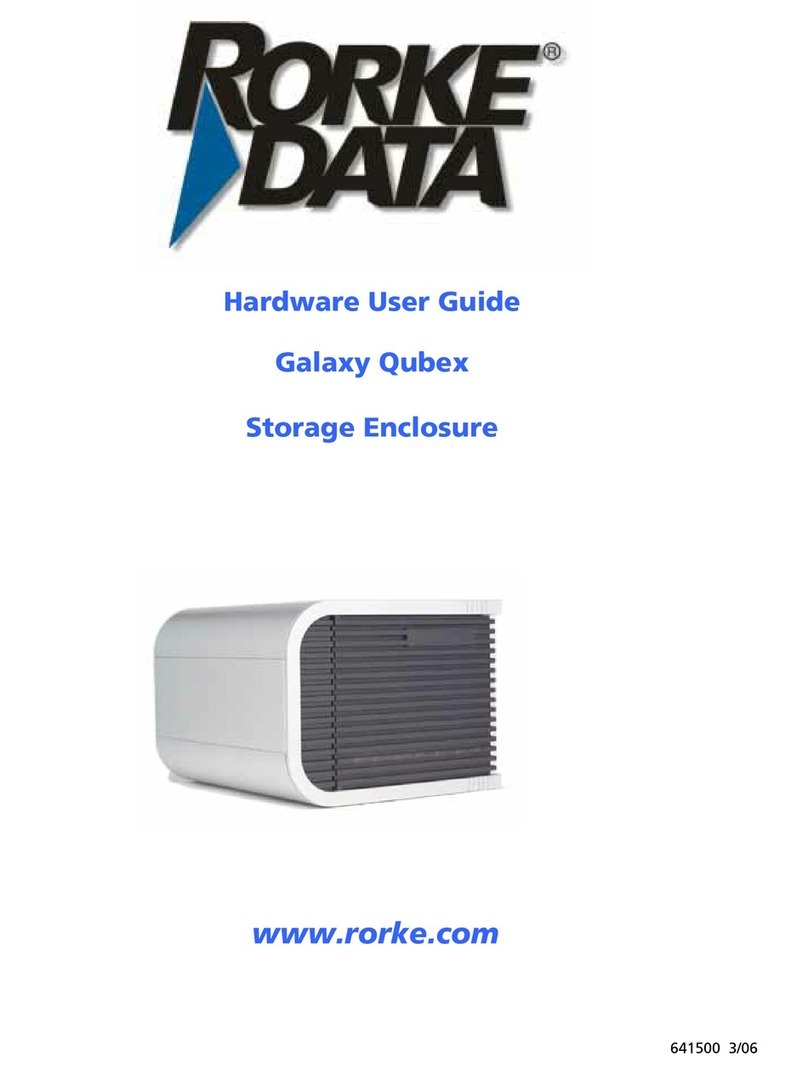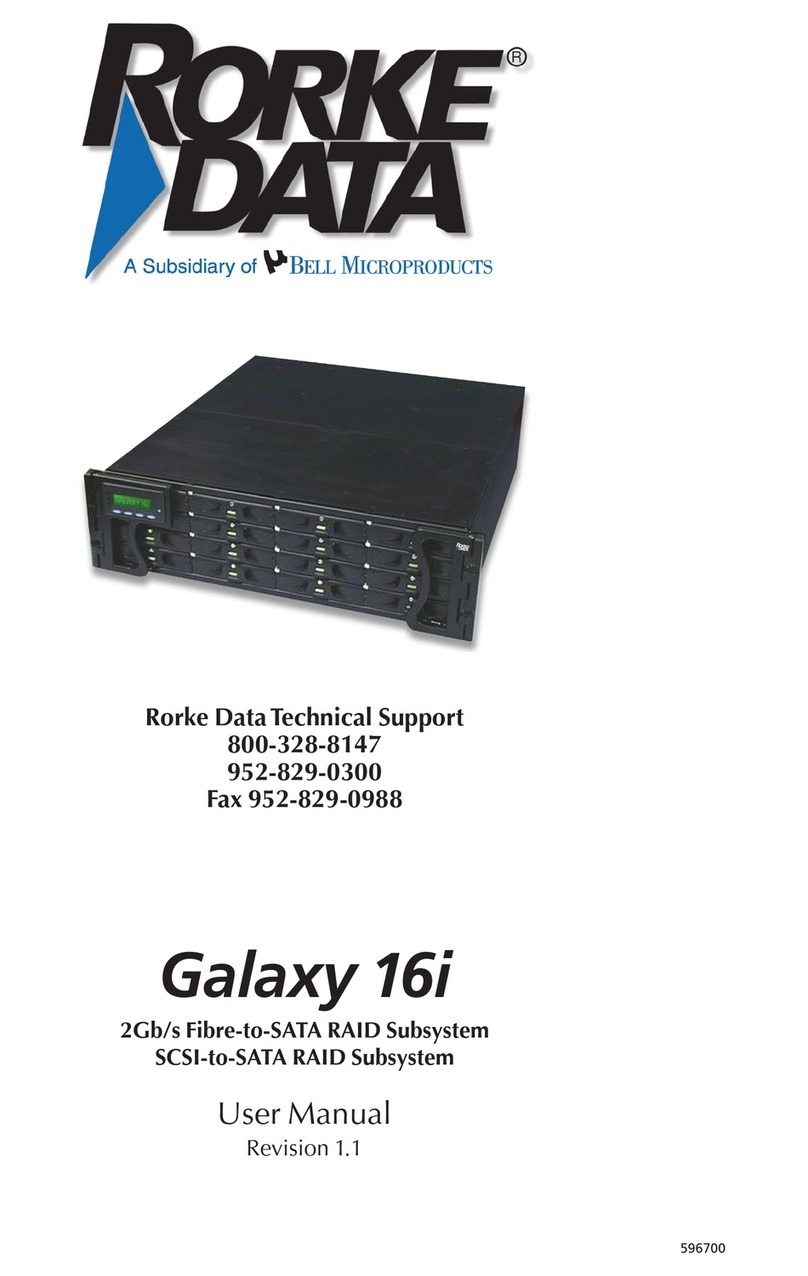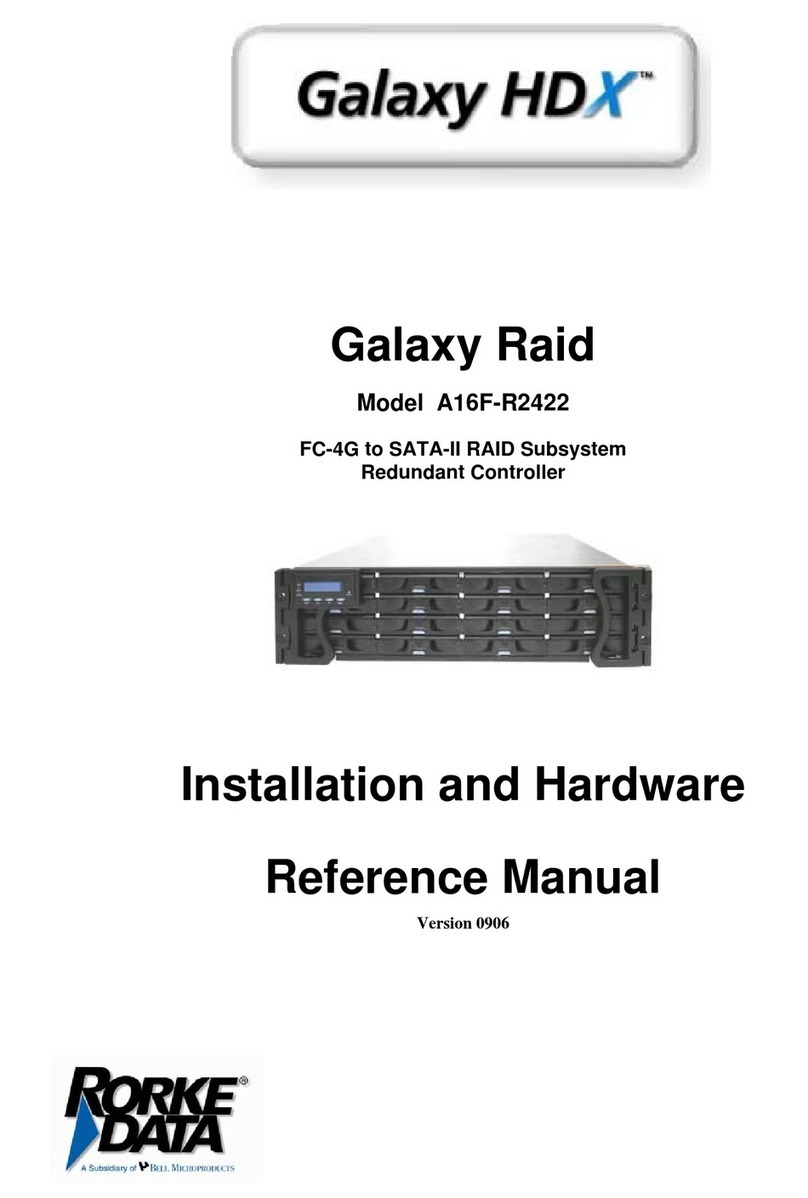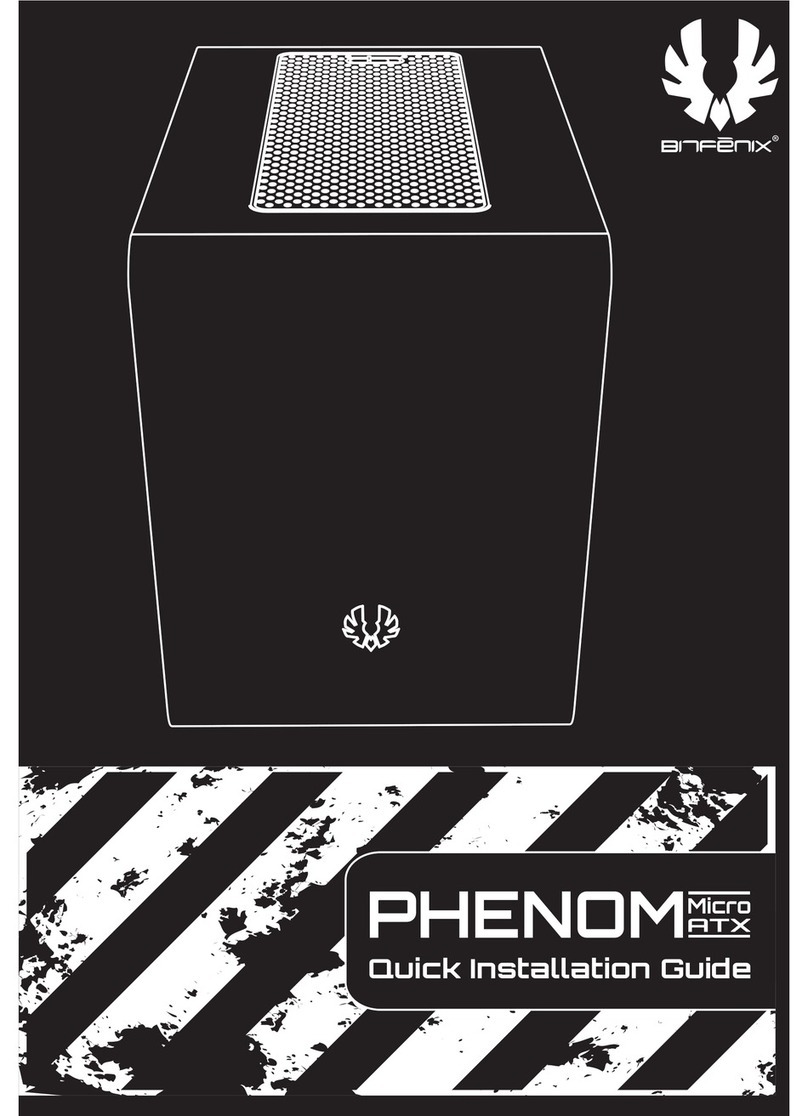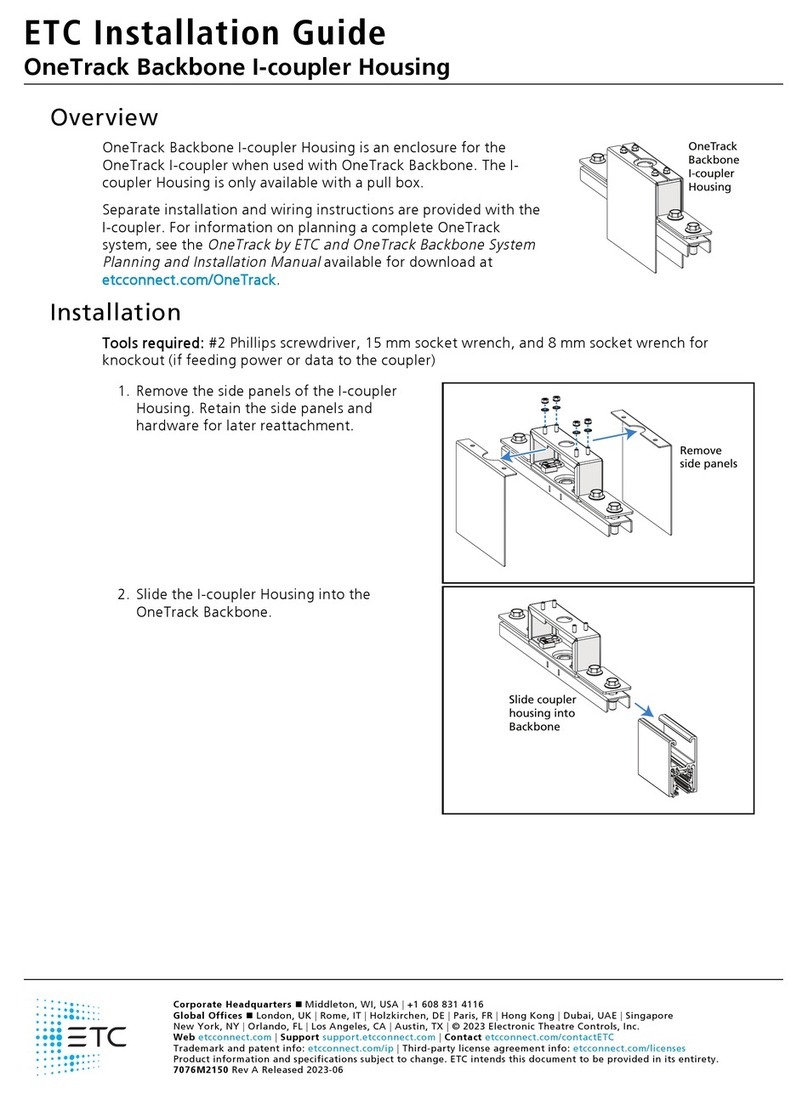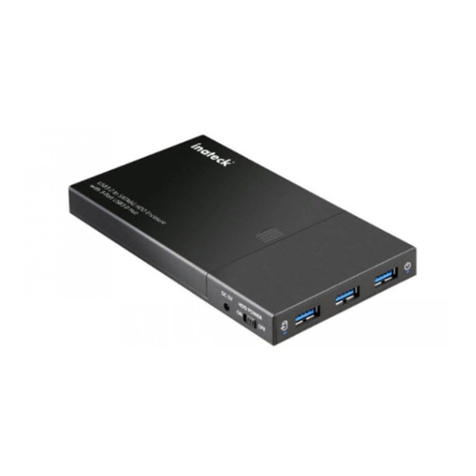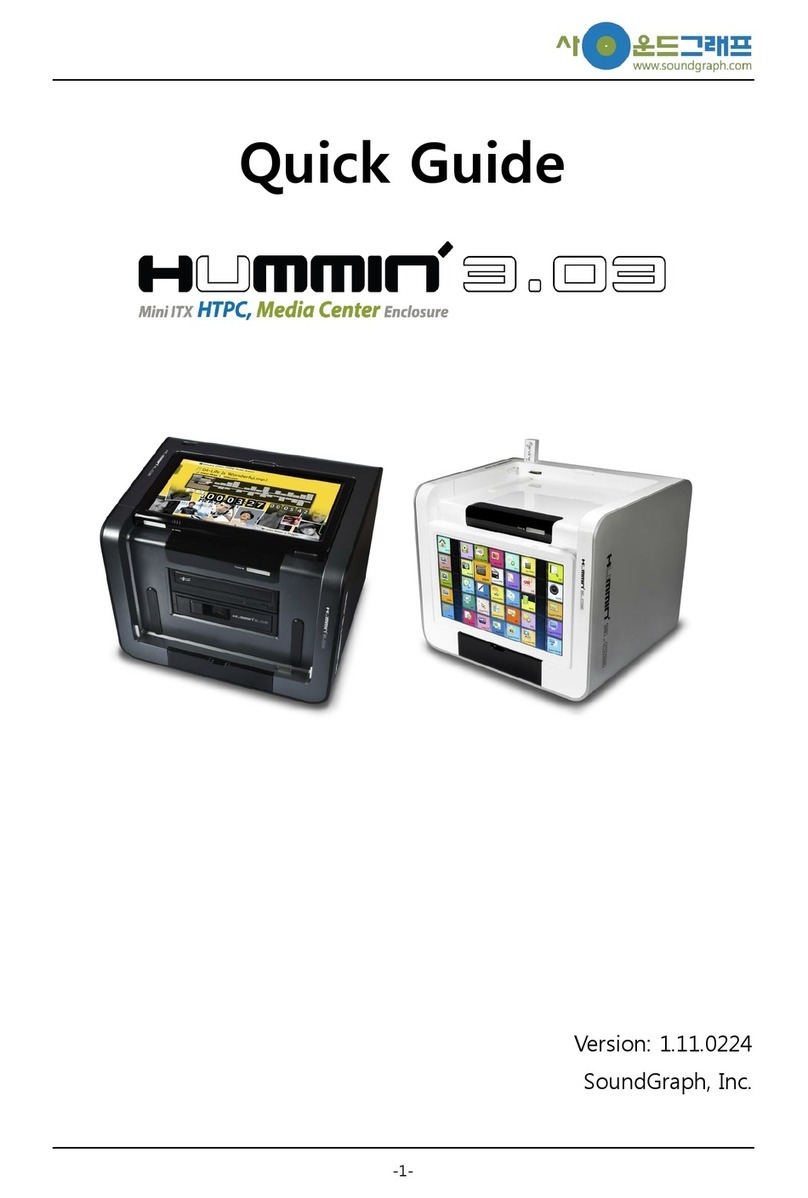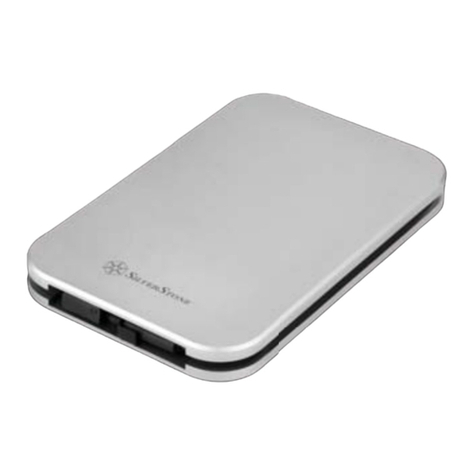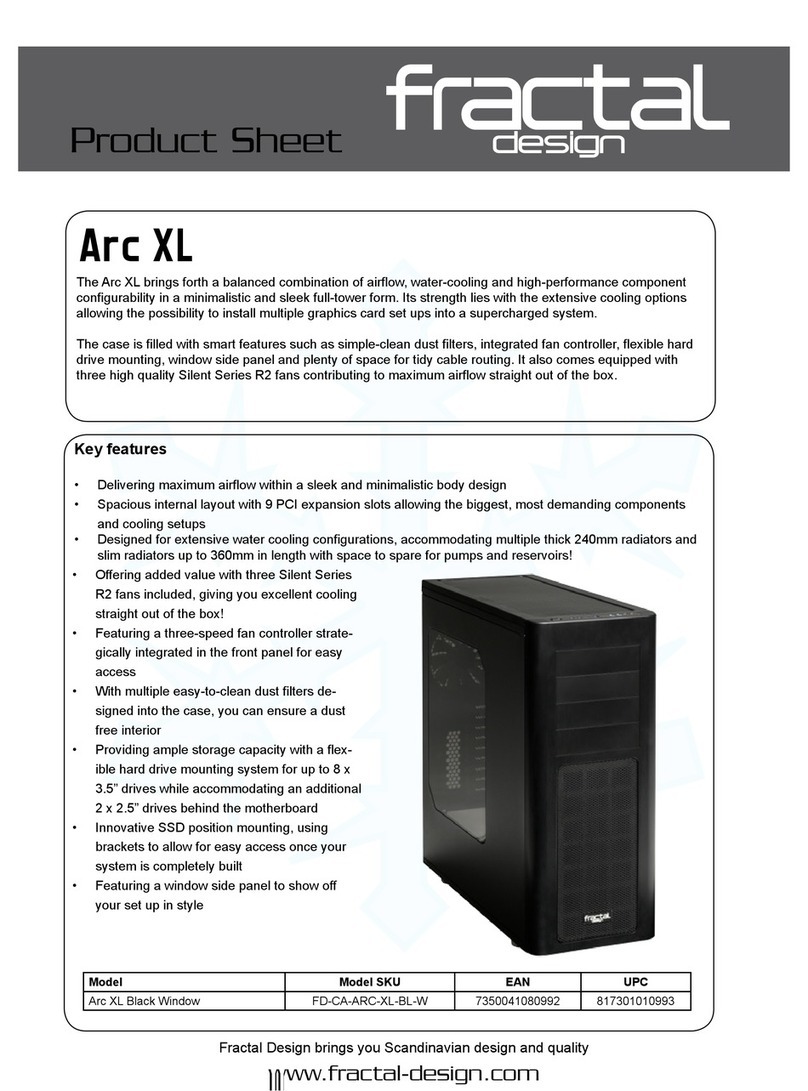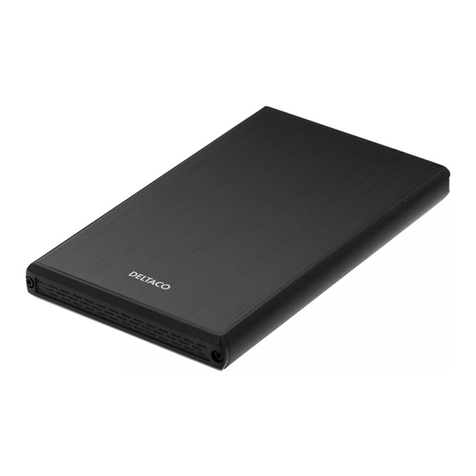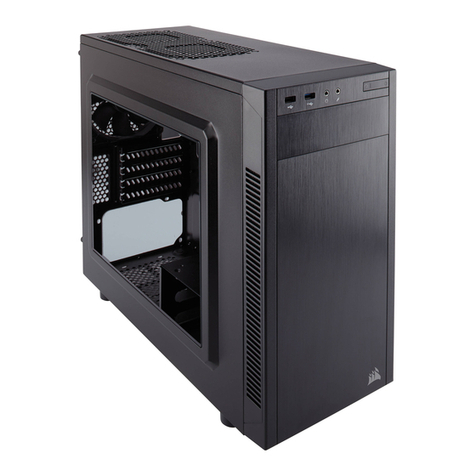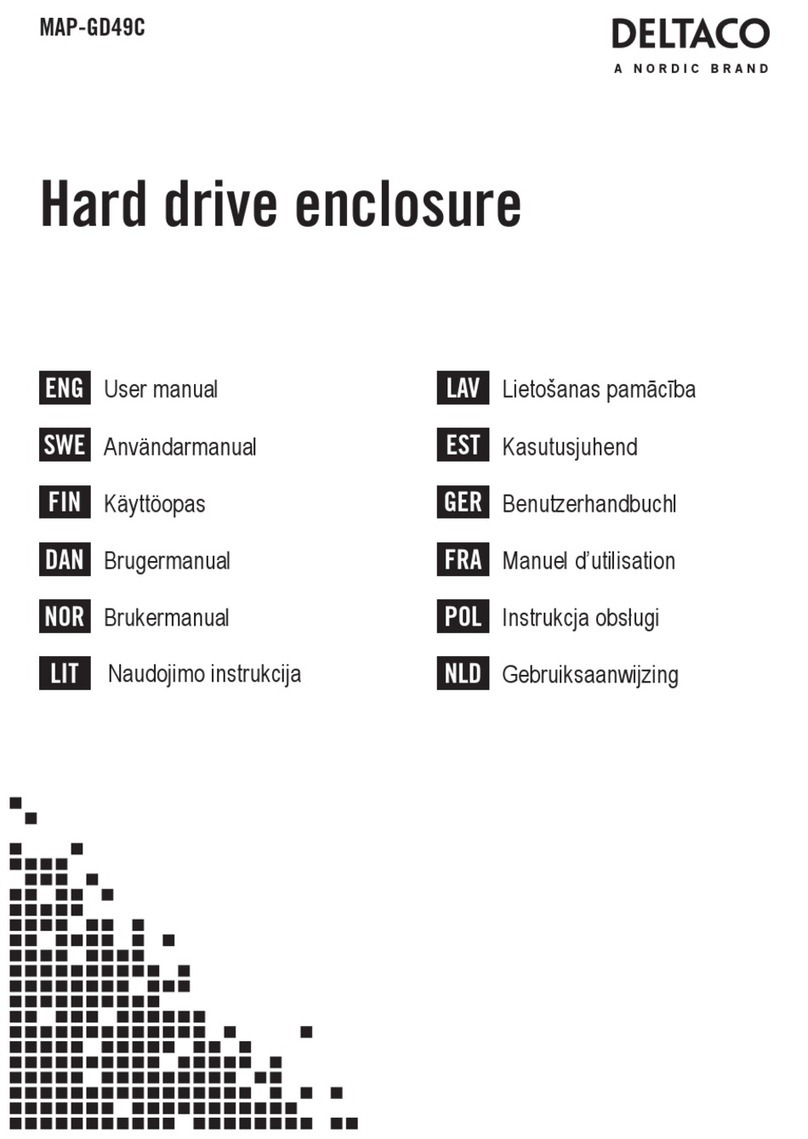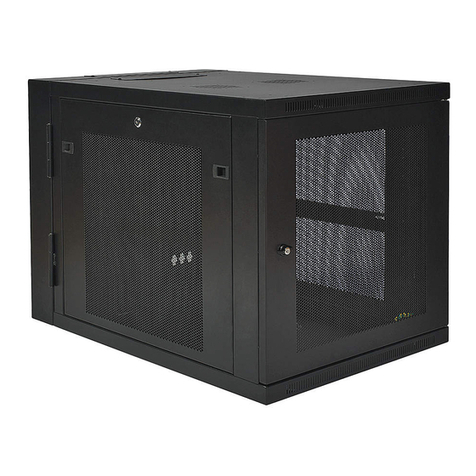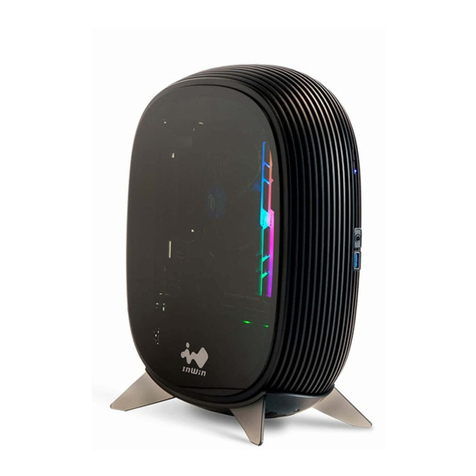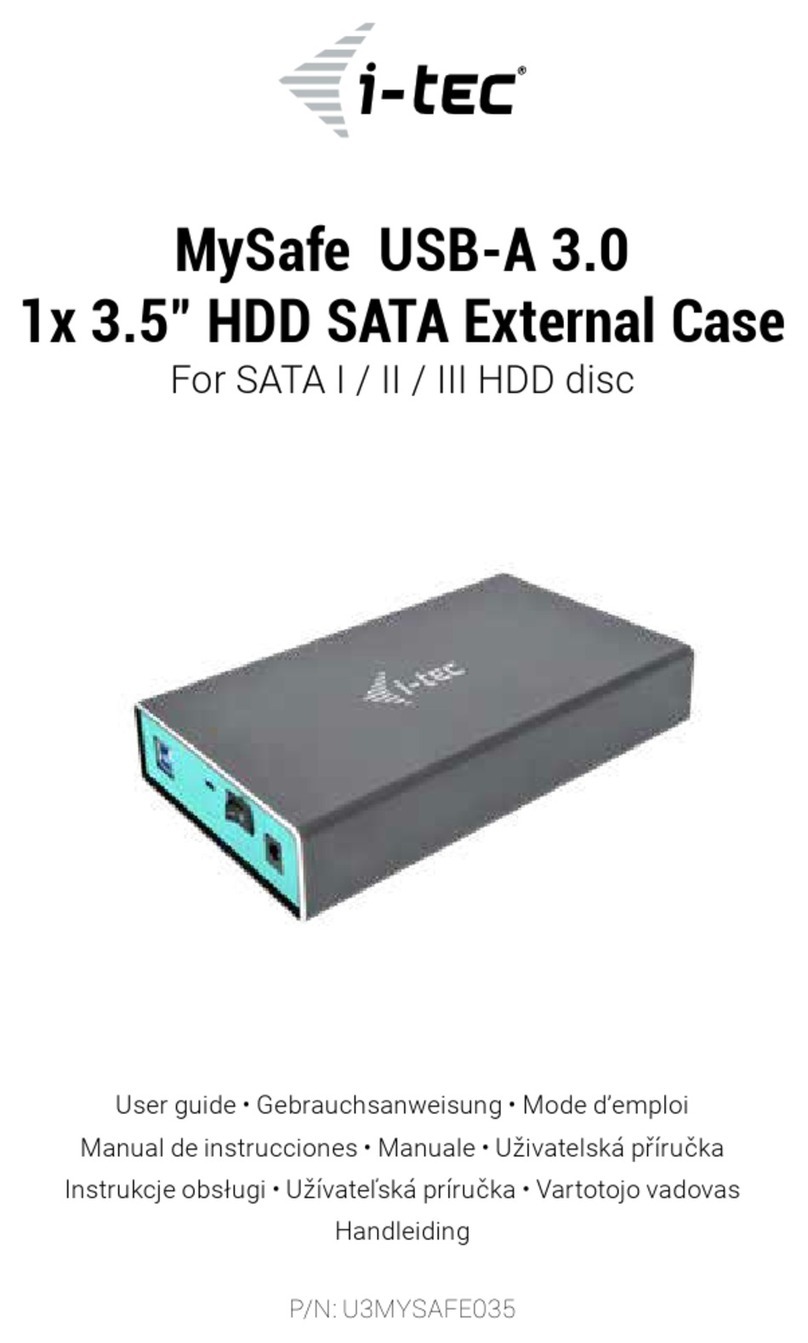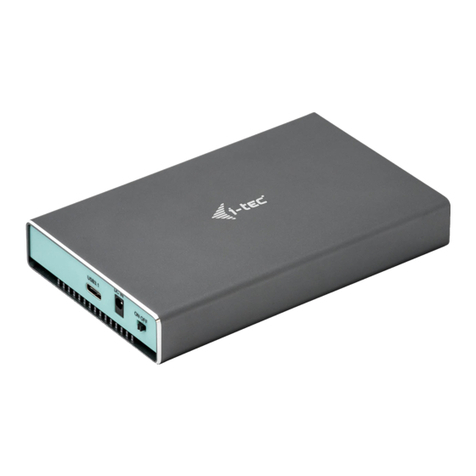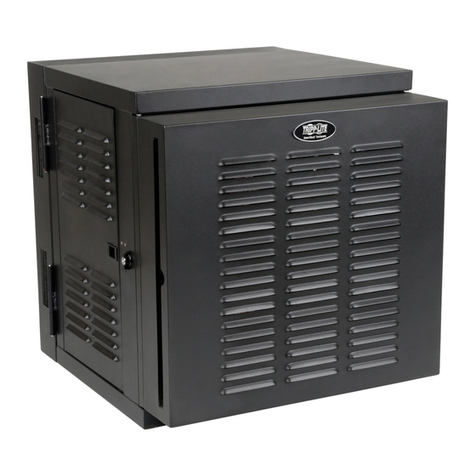Rorke Data Galaxy Raid GALHDX-7370S-8U4D User manual

Galaxy Raid
Model GALHDX-7370S-8U4D
8 bay SCSI U320 to SATA-II RAID Subsystem
Galaxy Raid
Model GALHDX-7370S-8U4D
12 bay SCSI U320 to SATA-II RAID Subsystem
Installation and Hardware
Reference Manual
Version 060107

Galaxy GALHDX-7370S-8+12U4D Installation and Hardware Reference Manual
ii
Contact Information
Americas
Rorke Data Inc
7626 Golden Triangle Drive
Eden Prairie, MN 55344
USA
Tel: +1-800 328 8147
Fax: +1-952 829 0988
http://www.rorke.com

Galaxy GALHDX-7370S-8+12U4D Installation and Hardware Reference Manual
iii
Copyright 2005
This Edition First Published 2005
All rights reserved. This publication may not be reproduced, transmitted, transcribed,
stored in a retrieval system, or translated into any language or computer language, in
any form or by any means, electronic, mechanical, magnetic, optical, chemical,
manual or otherwise, without the prior written consent of Rorke Data , Inc.
Disclaimer
Rorke Data makes no representations or warranties with respect to the contents
hereof and specifically disclaims any implied warranties of merchantability or fitness
for any particular purpose. Furthermore, Rorke Data reserves the right to revise this
publication and to make changes from time to time in the content hereof without ob-
ligation to notify any person of such revisions or changes. Product specifications are
also subject to change without prior notice.
Trademarks
Galaxy and the Galaxy logo are registered trademarks of Rorke Data , Inc.
PowerPC®is a trademark of International Business Machines Corporation and
Motorola Inc.
Solaris and Java are trademarks of Sun Microsystems, Inc.
All other names, brands, products or services are trademarks or registered trademarks
of their respective owners.

Galaxy GALHDX-7370S-8+12U4D Installation and Hardware Reference Manual
iv
Warnings and Certifications
Restricted Access Location:
This equipment is intended to be installed in a RESTRICTED ACCESS
LOCATION only.
Electric Shock Warning!
To Prevent Electric Shock:
Access to this equipment is granted only to trained operators and service
personnel who have been instructed of and fully understand the possible
hazardous conditions and the consequences of accessing non-field-
serviceable units. For example, accessing the backplane may cause electric
shock.
FCC (applies in the U.S. and Canada)
FCC Class A Radio Frequency Interference Statement
This device complies with Part 15 of the FCC rules. Operation is subject to the
following two conditions: (1) this device may not cause harmful interference, and (2)
this device may accept any interference received, including interference that may
cause undesired operation.
NOTE:
This equipment has been tested and found to comply with the limits for a Class A
digital device, pursuant to Part 15 of the FCC Rules. These limits are designed to
provide reasonable protection against harmful interference when the equipment is
operated in a commercial environment. This equipment generates, uses, and can
radiate radio frequency energy and, if not installed and used in accordance with the
instruction manual, may cause harmful interference to radio communications.
Operation of this equipment in a residential area is likely to cause harmful
interference in which case the user will be required to correct the interference at his
own expense.
Any changes or modifications not expressly approved by the party responsible for
compliance could void the user’s authority to operate the equipment.
WARNING:

Galaxy GALHDX-7370S-8+12U4D Installation and Hardware Reference Manual
v
A shielded power cord is required in order to meet FCC emission limits and also to
prevent interference to nearby radio and television reception.
Use only shielded cables to connect I/O devices to this equipment. You are cautioned
that changes or modifications not expressly approved by the party responsible for
compliance could void your authority to operate the equipment.
This device is in conformity with the EMC.
CB (Certified Worldwide)
This device meets the requirements of the CB
standard for electrical equipment with regard to
establishing a satisfactory level of safety for persons
using the device and for the area surrounding the
apparatus. This standard covers only safety aspects
of the above apparatus; it does not cover other
matters, such as style or performance.
CCC for Power Supplies’ compatibility to China
Compulsory Certification.
ITE BSMI Class A, CNS 13438 (for Taiwan)
This device is in conformity with UL standards for safety.
RoHS 2002/96/EC compliant
WEEE Disposal of Old Electrical and Electronic Equipment

Galaxy GALHDX-7370S-8+12U4D Installation and Hardware Reference Manual
vi
Table of Contents
CONTACT INFORMATION ..................................................................................................................... II
WARNINGS AND CERTIFICATIONS ............................................... ERROR!BOOKMARK NOT DEFINED.
SAFETY PRECAUTIONS .......................................................................................................................IX
Precautions and Instructions..............................................................................................................ix
ESD Precautions................................................................................................................................ix
ABOUT THIS MANUAL.........................................................................................................................X
WHO SHOULD READ THIS MANUAL?..................................................................................................X
Related Documentation ...................................................................................................................... x
Conventions........................................................................................................................................ x
CHAPTER 1 INTRODUCTION...........................................................................1-1
1.1 PRODUCT OVERVIEW ...........................................................................................................1-1
1.1.1 Introduction .........................................................................................................................1-1
1.1.2 Model Variations.................................................................................................................1-2
1.1.3 Enclosure Chassis................................................................................................................1-2
1.1.3.1 Chassis Overview...................................................................................................................1-2
1.1.3.2 Physical Dimensions..............................................................................................................1-4
1.1.3.3 Front Panel Overview.............................................................................................................1-4
1.1.3.4 Hard Drive Numbering...........................................................................................................1-5
1.1.3.5 Rear Panel Overview..............................................................................................................1-5
1.1.3.6 Backplane Board....................................................................................................................1-7
1.2 SUBSYSTEM COMPONENTS...................................................................................................1-7
1.2.1 LCD Panel...........................................................................................................................1-7
1.2.2 Drive Trays..........................................................................................................................1-8
1.2.3 The RAID Controller Module .............................................................................................1-8
Controller Module Interfaces...................................................................................................................1-9
Host Ports...............................................................................................................................1-9
Ethernet Port ..........................................................................................................................1-9
COM Port.............................................................................................................................1-10
DIMM Module ......................................................................................................................................1-10
1.2.4 Battery Backup Unit..........................................................................................................1-10
1.2.5 Power Supply Units...........................................................................................................1-11
1.2.6 Cooling Fan Modules ........................................................................................................1-12
Advanced Fault-Preventative Operation................................................................................................1-12
1.3 SUBSYSTEM MONITORING..................................................................................................1-13
1.3.1 I2C Bus..............................................................................................................................1-13
1.3.2 LED Indicators ..................................................................................................................1-13
1.3.3 Firmware and RAIDWatch GUI........................................................................................1-13
1.3.4 Audible Alarms..................................................................................................................1-14
1.4 HOT-SWAPPABLE COMPONENTS ........................................................................................1-14
1.4.1 Hot-Swap Capabilities.......................................................................................................1-14
1.4.2 Components.......................................................................................................................1-14
1.4.3 Normalized Airflow...........................................................................................................1-15
CHAPTER 2 HARDWARE INSTALLATION...................................................2-1
2.1 INTRODUCTION.....................................................................................................................2-1
2.2 INSTALLATION PREREQUISITES ............................................................................................2-1
2.3 SAFETY PRECAUTIONS .........................................................................................................2-2
2.3.1 Precautions and Instructions................................................................................................2-2
2.3.2 Static-Free Installation.........................................................................................................2-3
2.3.3 BBU Warnings and Precautions..........................................................................................2-3
2.4 GENERAL INSTALLATION PROCEDURE .................................................................................2-4
2.4.1 Installation Procedure Flowchart.........................................................................................2-5
2.5 UNPACKING THE SUBSYSTEM...............................................................................................2-6
2.6 INSTALLATION OVERVIEW ...................................................................................................2-7

Galaxy GALHDX-7370S-8+12U4D Installation and Hardware Reference Manual
vii
2.6.1 Pre-installed Components....................................................................................................2-7
2.6.2 Uninstalled Components......................................................................................................2-7
2.7 RACKMOUNTING ..................................................................................................................2-7
2.7.1 Considerations for Installation Site and Chassis..................................................................2-7
2.7.2 Mounting Holes Positions....................................................................................................2-8
2.8 BBU INSTALLATION.............................................................................................................2-9
2.8.1 BBU Module Installation Overview....................................................................................2-9
2.8.2 Installation Procedure..........................................................................................................2-9
2.9 HARD DRIVE INSTALLATION ..............................................................................................2-11
2.9.1 Hard Drive Installation Pre-requisites ...............................................................................2-11
2.9.2 Drive Installation...............................................................................................................2-11
2.10 DRIVE TRAY INSTALLATION...............................................................................................2-12
CHAPTER 3 SYSTEM MONITORING..............................................................3-1
3.1 SUBSYSTEM MONITORING OVERVIEW..................................................................................3-1
3.2 STATUS-INDICATING LEDS..................................................................................................3-3
3.2.1 Brief Overview of the LEDs................................................................................................3-3
3.2.2 Controller Module LEDs.....................................................................................................3-3
3.2.3 Ethernet Port LEDs..............................................................................................................3-4
3.2.4 LCD Keypad Panel..............................................................................................................3-5
3.2.5 Drive Tray LEDs.................................................................................................................3-6
3.2.6 BBU Module LED...............................................................................................................3-7
3.2.7 PSU LED.............................................................................................................................3-7
3.2.8 Cooling Fan Module LED...................................................................................................3-7
3.3 AUDIBLE ALARM..................................................................................................................3-8
3.3.1 Default Threshold Values....................................................................................................3-9
3.3.2 Failed Devices .....................................................................................................................3-9
3.4 I2CMONITORING ...............................................................................................................3-10
CHAPTER 4 SYSTEM CONNECTION AND OPERATION...........................4-1
4.1 SCSI CONNECTION OVERVIEW ............................................................................................4-1
4.1.1 SCSI Cables.........................................................................................................................4-1
4.1.2 SCSI Port on the Controller Rear Panel...............................................................................4-1
4.1.3 SCSI Termination................................................................................................................4-2
Using the LCD Keypad Panel..................................................................................................................4-4
Configuration over Hyper Terminal ........................................................................................................4-4
Via RAIDWatch GUI ..............................................................................................................................4-5
4.2 HOST CONNECTION TOPOLOGY............................................................................................4-6
4.2.1 Single Host ..........................................................................................................................4-6
4.2.2 Dual Hosts...........................................................................................................................4-7
4.3 POWER ON...........................................................................................................................4-7
4.3.1 Power On Checklist.............................................................................................................4-7
4.3.2 Power On Sequence.............................................................................................................4-8
4.3.3 Power On Procedure............................................................................................................4-8
4.3.4 Power On Status Check.......................................................................................................4-9
4.3.5 LCD Screen.......................................................................................................................4-10
4.4 POWER OFF PROCEDURE ....................................................................................................4-11
CHAPTER 5 SYSTEM MAINTENANCE
5.1 OVERVIEW ...........................................................................................................................5-1
5.1.1 About Subsystem Maintenance ...........................................................................................5-1
5.1.2 General Notes on Component Replacement........................................................................5-1
5.2 REPLACING CONTROLLER MODULE COMPONENTS ..............................................................5-2
5.2.1 Overview .............................................................................................................................5-2
5.2.2 Notes on Controller Module Maintenance...........................................................................5-3
5.2.3 Removing the Controller Module........................................................................................5-3
5.2.4 Replacing the Controller Module ........................................................................................5-4
5.3 REPLACING OR UPGRADING MEMORY MODULES.................................................................5-5
5.3.1 Memory Module Installation Overview ..............................................................................5-5
5.3.2 Selecting a Memory Module ...............................................................................................5-5

Galaxy GALHDX-7370S-8+12U4D Installation and Hardware Reference Manual
viii
5.3.3 DIMM Module Installation..................................................................................................5-6
5.4 REPLACING A FAULTY BBU.................................................................................................5-8
5.5 REPLACING A FAILED PSU MODULE....................................................................................5-9
5.5.1 Notes on PSU Module Maintenance....................................................................................5-9
5.5.2 Replacing the PSU Module .................................................................................................5-9
5.6 REPLACING A FAILED COOLING FAN MODULE...................................................................5-12
5.6.1 Notes on Cooling Fan Module Maintenance.....................................................................5-12
5.6.2 Replacing a Cooling Fan Module......................................................................................5-12
5.7 DRIVE TRAY MAINTENANCE..............................................................................................5-13
5.7.1 Notes on Hard Drive Maintenance ....................................................................................5-13
5.7.2 Replacing a Failed Hard Drive ..........................................................................................5-15
APPENDIX A SUBSYSTEM SPECIFICATIONS
A.1 TECHNICAL SPECIFICATIONS ...............................................................................................A-1
Vibration.........................................................................................................................................A-2
A.2 CONTROLLER SPECIFICATIONS............................................................................................A-3
A.2.1 Configuration........................................................................................................................A-3
A.2.2 Architecture..........................................................................................................................A-3
A.3 DRIVE TRAY SPECIFICATIONS .............................................................................................A-4
A.4 POWER SUPPLY SPECIFICATIONS.........................................................................................A-4
A.5 COOLING MODULE SPECIFICATIONS....................................................................................A-4
A.6 RAID MANAGEMENT..........................................................................................................A-5
A.7 FAULT TOLERANCE MANAGEMENT.....................................................................................A-5
APPENDIX B SPARE PARTS AND ACCESSORIES
B.1 SPARE PARTS....................................................................................................................... B-1
B.1.1 Spare Parts Overview ......................................................................................................... B-1
B.1.2 Spare Parts List................................................................................................................... B-1
B.1.3 Controller Modules............................................................................................................. B-2
B.2 ACCESSORIES AND OPTIONAL ITEMS................................................................................... B-3
B.2.1 Accessories Overview ........................................................................................................ B-3
B.2.2 Accessory Parts List ........................................................................................................... B-3
APPENDIX C PINOUTS
C.1. SCSI PORT:VHDCI CONNECTOR PINOUTS ........................................................................ C-1
C.2. COM1 CABLE:DB9 AND AUDIO JACK PINOUTS................................................................. C-2
C.3. GAL-9011 NULL MODEM ................................................................................................... C-3
C.4. ETHERNET PORT PINOUTS ................................................................................................... C-3
C.5. MAIN POWER ...................................................................................................................... C-3

Galaxy GALHDX-7370S-8+12U4D Installation and Hardware Reference Manual
ix
Safety Precautions
Precautions and Instructions
•Prior to powering on the subsystem, ensure that the correct power range is being
used.
•The Galaxy subsystems come with eight (8) or twelve (12) drive bays. Leaving
any of these drive bays empty will seriously affect the efficiency of the airflow
within the enclosure, and will consequently lead to the system overheating,
which can cause irreparable damage.
•If a module fails, leave it in place until you have a replacement unit and you are
ready to replace it.
•Airflow Consideration: The subsystem requires an airflow clearance, especially
at the front and the rear side.
•Handle subsystem modules using the retention screws, extraction levers, and the
metal frames/faceplates. Avoid touching PCB boards and connector pins.
•To comply with safety, emission, or thermal requirements, none of the covers or
replaceable modules should be removed. Make sure that during operation, all
enclosure modules and covers are securely in place.
•Be sure that the rack cabinet that the subsystem chassis is to be installed provides
sufficient ventilation channels and airflow circulation around the subsystem.
•Provide a soft, clean surface to place your subsystem on before working on it.
Servicing on a rough surface may damage the exterior of the chassis.
•If it is necessary to transport the subsystem, repackage all disk drives separately.
If using the original package material, other replaceable modules can stay within
the enclosure.
ESD Precautions
Observe all conventional anti-ESD methods while handling system modules. The use
of a grounded wrist strap and an anti-static work pad are recommended. Avoid dust
or debris in your work area.

Galaxy GALHDX-7370S-8+12U4D Installation and Hardware Reference Manual
x
About This Manual
This manual:
•Introduces the Galaxy GALHDX-7370S-8+12U4D RAID Subsystems.
•Describes all the active components in the subsystem.
•Provides recommendations and details about the hardware installation process.
•Briefly describes how to monitor the subsystem.
•Describes how to maintain the subsystem.
This manual does not:
•Describe components that are not user-serviceable.
•Describe the configuration options of firmware, using terminal emulation
program, or the RAIDWatch GUI that came with your subsystem.
•Give a detailed description of the RAID processing units, or the RAID
controllers embedded within the subsystem.
Who Should Read This Manual?
This manual assumes that its readers are experienced with computer hardware
installation and are familiar with storage enclosures.
Related Documentation
•Generic Operation Manual
•RAIDWatch User’s Manual
These two documents can be found in the product utility CD included with your
subsystem package.
Conventions
Naming
From this point on and throughout the rest of this manual, the Galaxy series is
referred to as simply the “subsystem” or the “system.”

Galaxy GALHDX-7370S-8+12U4D Installation and Hardware Reference Manual
xi
Important Messages
Important messages appear where mishandling of components is possible or when
work orders can be misunderstood. These messages also provide vital information
associated with other aspects of system operation. The word “important” is written
as “IMPORTANT,” both capitalized and bold and is followed by text in italics. The
italicized text is the important message.
Warnings
Warnings appear where overlooked details may cause damage to the equipment or
result in personal injury. Warnings should be taken seriously. Warnings are easy to
recognize. The word “warning” is written as “WARNING,” both capitalized and
bold and is followed by text in italics. The italicized text is the warning message.
Cautions
Cautionary messages should also be heeded to help you reduce the chance of losing
data or damaging the system. Cautions are easy to recognize. The word “caution” is
written as “CAUTION,” both capitalized and bold and is followed by text in italics.
The italicized text is the cautionary message.
Notes
Notes inform the reader of essential but non-critical information. These messages
should be read carefully as any directions or instructions contained therein can help
you avoid making mistakes. Notes are easy to recognize. The word “note” is written
as “NOTE,” both capitalized and bold and is followed by text in italics. The
italicized text is the note message.
Steps
Steps describe the sequential tasks in a specific work procedure. Following the steps
in their proper order helps guarantee effectiveness and lowers the chance of making
mistakes.
Lists
Bulleted Lists: Bulleted lists are statements of non-sequential facts. They can be read
in any order. Each statement is preceded by a round black dot “•.”
Numbered Lists: Numbered lists describe sequential steps you should follow in
order.

Galaxy GALHDX-7370S-8+12U4D Installation and Hardware Reference Manual
xii
Software and Firmware Updates
Please contact tech support for the latest software or firmware updates. Note that the
firmware version installed on your system should provide the complete functionality
listed in the specification sheet/user’s manual. We provide special revisions for
various application purposes. Therefore, DO NOT upgrade your firmware unless you
fully understand what a firmware revision will do.
Problems that occur during the updating process may cause unrecoverable errors and
system down time. Always let technical personnel handle the upgrade or consult
technical personnel before proceeding with any firmware upgrade.

1-1
Chapter 1
Introduction
1.1 Product Overview
1.1.1 Introduction
This hardware manual briefly introduces the Galaxy RAID serial ATA (SATA)
RAID subsystem series. The SATA-based RAID subsystems come with two
320MB/second SCSI (SCSI-320) host channels and provide RAID protection to the
data stored in the eight (8) or twelve (12) hot-swappable, SATA-II hard drives. The
2U-profile subsystems are equipped with redundant and hot-swappable cooling fan
and power supply modules to reduce the chance of downtime by component failure.
The modular nature of the subsystem and the easy accessibility to all major
components ensure the ease of subsystem maintenance. The differences between the
two models will be described in the following sections
The 12-bay and 8-bay subsystems are shown below:
Figure 1-1: Galaxy RAID 12-bay SATA RAID Subsystem
Figure 1-2: Galaxy RAID 8-bay SATA RAID Subsystem

Galaxy RAID GALHDX-7370S-8+12U4D Installation and Hardware Reference Manual
Product Overview
1-2
1.1.2 Model Variations
There are two available models in the 2U version of the new SATAII Galaxy RAID
subsystem series. Below is a comparison chart listing major components of the two
models. For specific Model and component chart, refer to Appendix B.
12 Bay 8 Bay
Number of Drive Bays 12 8
RAID Controller 1 1
Host Channels SCSI-320 x 2 SCSI-320 x 2
PSUs 2 2
Cooling Modules 3 2
LCD Panel 1 1
Battery Support Optional Optional
Table 1- 1: Available SATA RAID Subsystem Models
NOTE:
On receiving and unpacking your subsystem, please check the package contents
against the included unpacking checklist. If any modules appear to be missing,
please contact your subsystem vendor immediately.
1.1.3 Enclosure Chassis
1.1.3.1 Chassis Overview
The Galaxy RAID subsystem comes in a 2U metal chassis. A backplane board
divides the enclosure internally into front and rear sections. The front section
accommodates twelve (12) or eight (8) drive trays (with their associated hard drives)
and the rear section accommodates two (2) PSU modules, two (2) or three (3) single-
fan cooling modules, and a single RAID controller module. The two (2) forearm
handles on the front of the subsystem enable you to easily insert/extract the chassis
into/from a rack or cabinet. Pre-drilled mounting holes on the sides of the chassis
allow you to attach separately purchased slide rails.

Chapter 1: Introduction
1-3
Product Overview
Figure 1-3: Locations of Key Components in a 12-bay Model
Figure 1-4: Locations of Key Components in an 8-bay Model
CAUTION!
When working with the subsystem, it is important to use tools with extreme care.
Do not place tools or other items on top of the enclosure to help avoid damaging
the outward appearance of chassis.

Galaxy RAID GALHDX-7370S-8+12U4D Installation and Hardware Reference Manual
Product Overview
1-4
1.1.3.2 Physical Dimensions
The subsystems come in a standard 2U, 19” chassis with the following dimensions:
•Measured with forearm handles: 482mm x 88mm x 505mm (width x height x
depth)
•Measured without forearm handles: 446mm x 88mm x 490mm (width x height x
depth)
NOTE:
Components accessed through the front panel are referred to as “Front Panel
Components” and Components accessed through the rear panel are referred to as
“Rear Panel Components.”
1.1.3.3 Front Panel Overview
The front section of the subsystem features a 4 x 2 or 4 x 3 layout for eight (8) or
twelve (12) 3.5-inch disk drives and a foldable LCD keypad panel. The front panels
of the RAID subsystems described in this manual are shown in Figure 1-5 and
Figure 1-6. A description of each front panel component is given below:
Figure 1-5: Front View – 12-bay Model
Figure 1-6: Front View – 8-bay Model
The front panels shown in Figure 1-5 and Figure 1-6 are designed to accommodate
the following components:
•Forearm handles with an LCD keypad panel: The LCD Panel mounted on the
left handle shows system information and provides local access to the firmware-
embedded configuration and monitoring utility.

Chapter 1: Introduction
1-5
Product Overview
•Drive bays with drive tray canisters: The drive bays are used to house the
subsystem hard drives. The GALHDX-7370S-12U4D contains 12 drive bays while
the GALHDX-7370S-8U4D contains 8 drive bays with a blank plate covering the
lower part of the front panel.
1.1.3.4 Hard Drive Numbering
The subsystems are housed in an enclosure that is 4 bays wide and 3 or 2 bays high.
When viewed from the front, drive bays (slots) are numbered 1 to 12 (See Figure 1-
7) or 1 to 8 (See Figure 1-8), from the left to the right, and then from the top to the
bottom.
Figure 1-7: 12 Drive Bays Numbering Sequence
Figure 1-8: 8 Drive Bays Numbering Sequence
1.1.3.5 Rear Panel Overview
The rear section of the subsystems are accessed through the rear panel and is reserved
for a single RAID controller module, one (1) battery backup unit (BBU), two (2)
power supply units (PSUs), and three (12 Bay) or two (8 Bay) cooling fan modules.
The subsystem rear views are shown in Figure 1-9 and Figure 1-10. A description
of each rear panel component is given in the proceeding discussions:

Galaxy RAID GALHDX-7370S-8+12U4D Installation and Hardware Reference Manual
Product Overview
1-6
Figure 1-9: Rear View – 12 Bay Subsystem
Figure 1-10: Rear View – 8 Bay Subsystem
The rear panels shown above are designed to accommodate the following
components:
•RAID controller module:The controller module contains a controller main
board and a pre-installed DDR DIMM module.
•Power Supply Unit (PSU): The PSU is used to provide power to the
subsystem.
•BBU module: A BBU comes as an optional module which provides the
protective implementation to cached data; and, unless deselected when
purchasing the subsystems, is installed into the module slot located at the
upper left corner of the controller module.
•Cooling fan module: The redundant cooling fan module is used to ventilate
the subsystem and to reduce the temperature within the subsystem. The 12-bay
model has an additional cooling module installed in the bottom module bay.
NOTE:
Each of the power supplies on the sides of the enclosure houses one cooling fan
module in a retrievable canister. When a power supply is removed, the cooling
module is also removed. Therefore, replace the power supply unit as fast as possible
whenever it becomes necessary. Cooling fan modules can be independently removed
from the chassis without affecting PSU operation.

Chapter 1: Introduction
1-7
Subsystem Components
1.1.3.6 Backplane Board
An integrated backplane board separates the front and rear sections of the
subsystems. The PCB board provides traces for logic level signal traces and low
voltage power paths. It contains no user-serviceable components.
1.2 Subsystem Components
All the active components on the subsystems can be accessed through either the front
or rear panel. The modular design of the active components facilitates their easy
installation and removal. Hot-swap mechanisms are incorporated to eliminate power
surges and signal glitches that might occur while removing or installing these
modules.
1.2.1 LCD Panel
Figure 1-11: Opening the Front Handle
The LCD panel shown in Figure 1-11 consists of a 16 characters x 2 rows LCD
screen with push buttons, a mute button, and LED status indicators. The LCD front
panel provides full access to all array configurations and monitoring. After powering
up the subsystem, the initial screen will show the subsystem model name. A different
name can be manually assigned to the subsystem or different drive arrays. This will
enable easier identification in a topology consisting of numerous arrays.
Figure 1-12: Front Panel Retention Latch
To access drive bays in the left- or right-hand side column, first flip the retention
latches (see Figure 1-12) on the enclosure front handles, and then swing the handles
to the left- and right-hand sides. To close the handles (see Figure 1-13), swing the
handles toward the system; gently press the handles until a click is heard. The latches
will keep the handles in place.

Galaxy RAID GALHDX-7370S-8+12U4D Installation and Hardware Reference Manual
Subsystem Components
1-8
Figure 1-13: Closing the Front Handles
1.2.2 Drive Trays
The subsystems come with 12 or 8 drive trays (see Figure 1-14) designed to
accommodate separately purchased standard 1-inch pitch, 3.5-inch disk drives. The
drive bays are accessed from the enclosure front. Two LED’s on the front of the tray
are used to indicate the drive status. A key-lock on each drive tray secures the hard
drive in place, while an easily accessible release button ensures fast and efficient
drive hot-swapping.
Figure 1-14: Drive Tray Front View
WARNING!
Be careful not to warp, twist, or contort the drive tray in any way (e.g., by dropping it
or resting heavy objects on it). The drive tray has been customized to fit into the drive
bays in the subsystem. If the drive bay superstructure is deformed or altered, the drive
trays may not fit into the drive bay.
1.2.3 The RAID Controller Module
The RAID controller module contains a main circuit board, a preinstalled 256MB
capacity or above DDR RAM DIMM module, and the necessary support interfaces.
The controller module contains no user-serviceable components. Except when
replacing a faulty unit or installing/upgrading the cache memory inside, the controller
module should never be removed or opened.
Table of contents
Other Rorke Data Enclosure manuals
